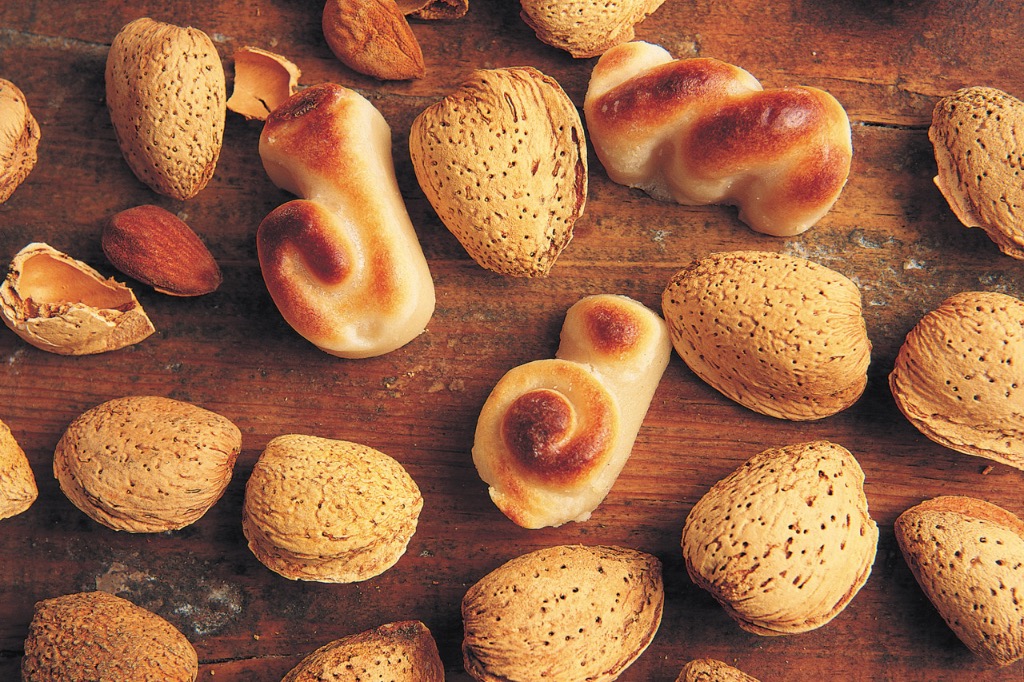Description
The Mazapán de Toledo PGI is a marzipan of fine and compact paste obtained from raw almonds and beet sugar or cane sugar or honey, glucose, sucrose or other natural sugar. Almonds are the principle ingredient, making up 50% of the total weight.
Production Area
The production area of Mazapán de Toledo PGI is located in the entire province of Toledo in the Autonomous Community of Castilla-La Mancha.
Production Method
The raw almonds are peeled and minced and then moistened with one or more types of sugar. The blended almonds and sugar are minced, kneaded, and finally packed. It can be produced in different shapes, which are obtained via a process of kneading and manual or mechanical modelling of the paste; it is then cooked in the oven.
Appearance and Flavour
Mazapán de Toledo PGI is sweet and it has a predominant flavour of almonds. It can be of different shapes and sizes, with different types of fillings and covered in various confectionary products.
History
Mazapán de Toledo PGI is a fruit of ancient tradition going back to the Middle Ages. At that time the central-meridian part of Spain was characterised by the coexistence of different races and cultures, the term mazapán comes from the Arabic spoken there at the time. The production in the city of Toledo goes back to the 12th century, even after the period of Arabic domination. Innumerable documents speak of Mazapán de Toledo, some describing how to make it, while others praising its taste and the artisanal quality of this sweet.
Gastronomy
Mazapán de Toledo PGI should be kept in a fresh and dry place. This sweet is typically eaten as a dessert at the end of a meal. It goes very well with sweet wines or sparkling wines and is especially enjoyed during the festive period.
Marketing
It is sold as Mazapán de Toledo PGI and is available in a variety of shapes, with fillings or coatings. It is sold in cartons of various weights, suited to the preservation.
Distinctive Features
Mazapán de Toledo PGI is a fruit of the great confectionary tradition of Toledo, which has been enriched not only by its Arabic and Jewish influences but also the skills of the nuns in the cloisters of the Toledian convents and the tenacious abilities of the master confectioners.







